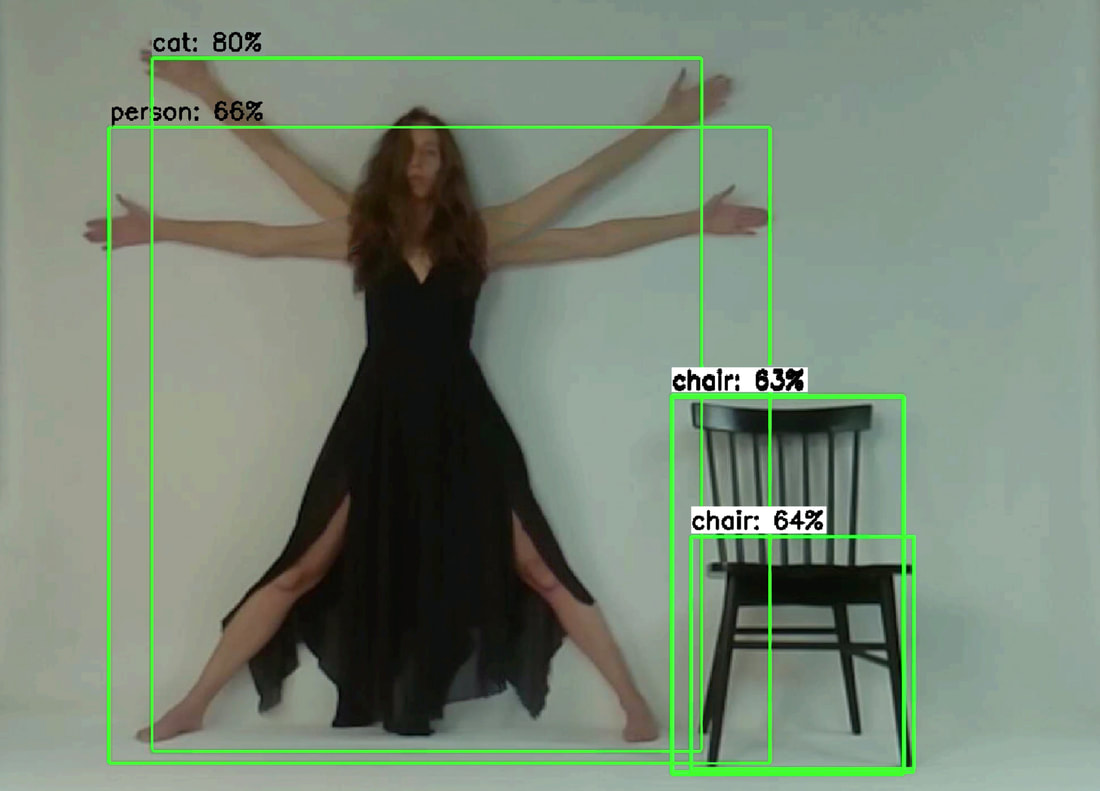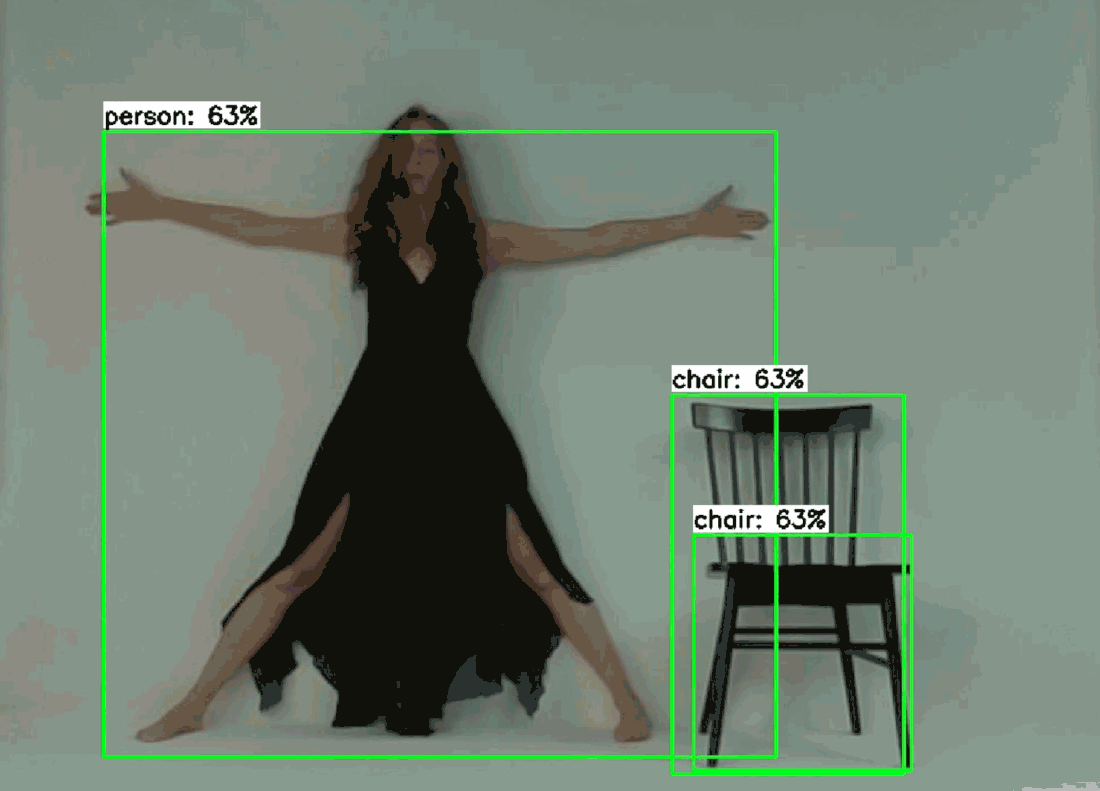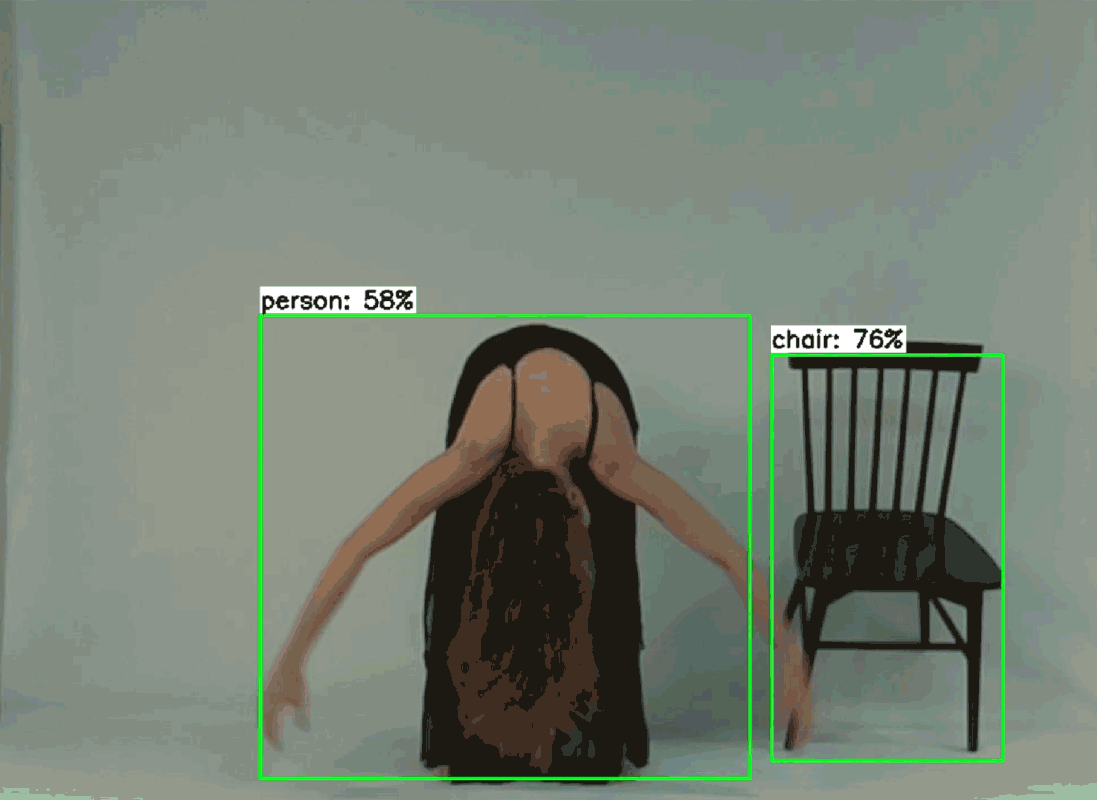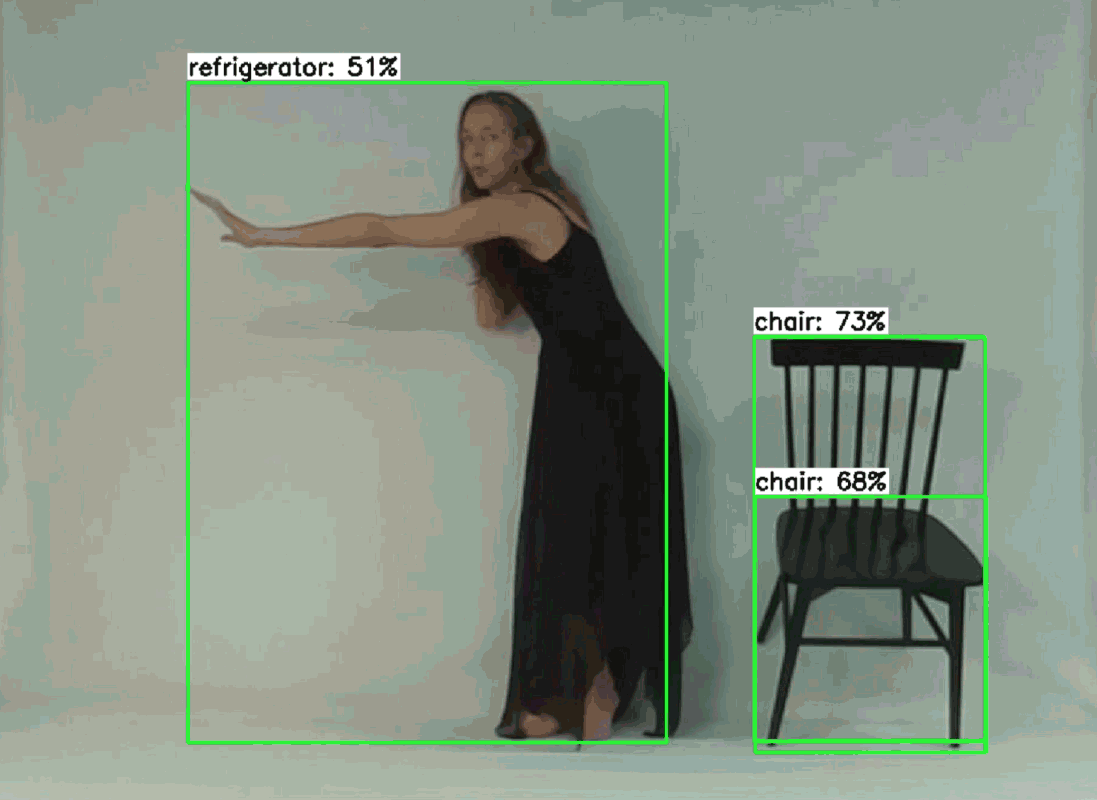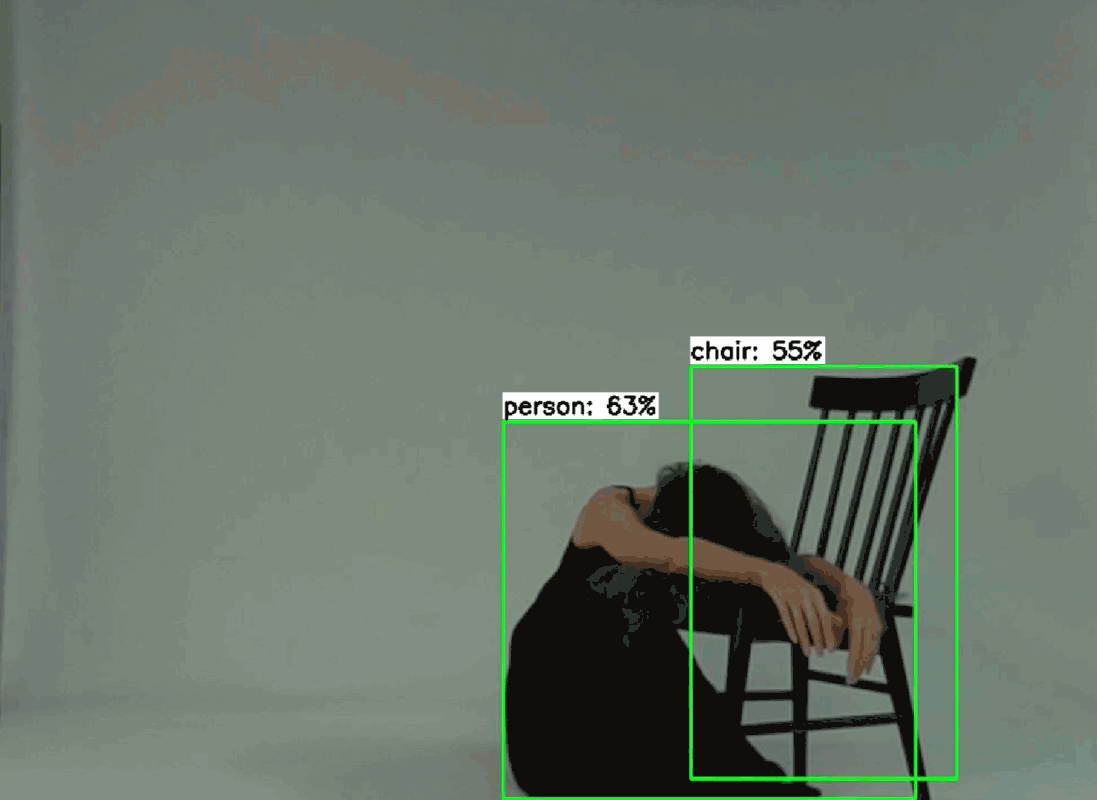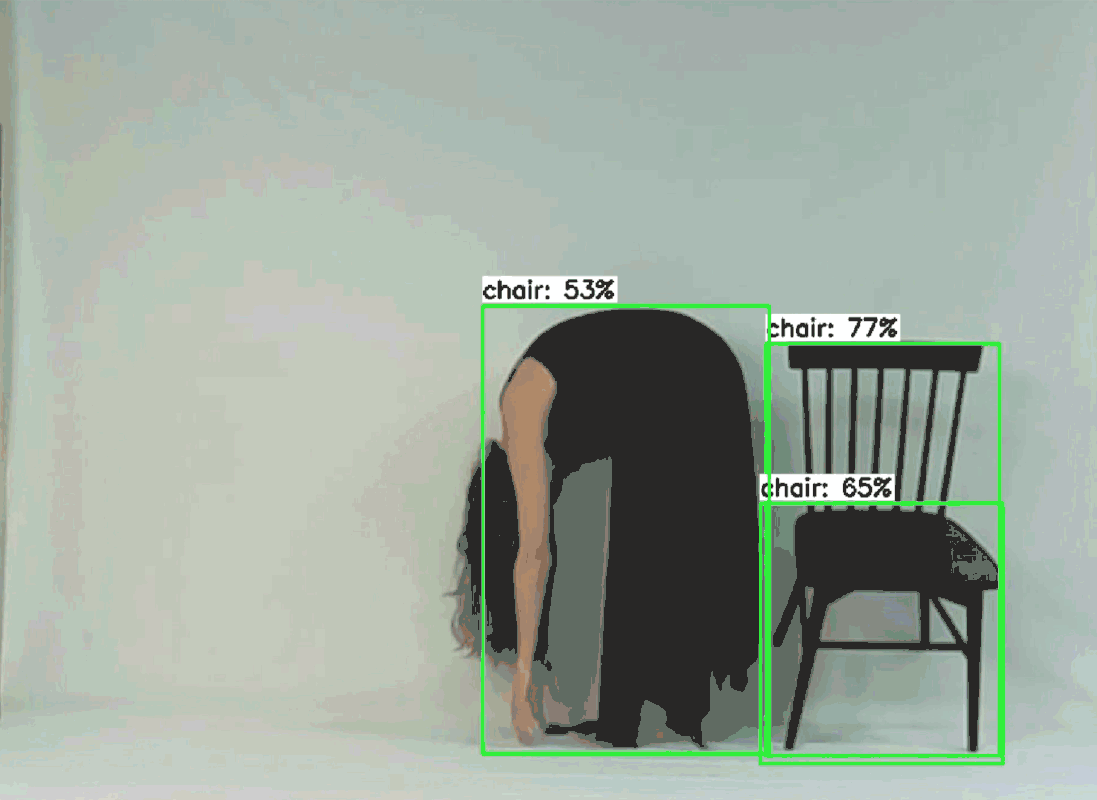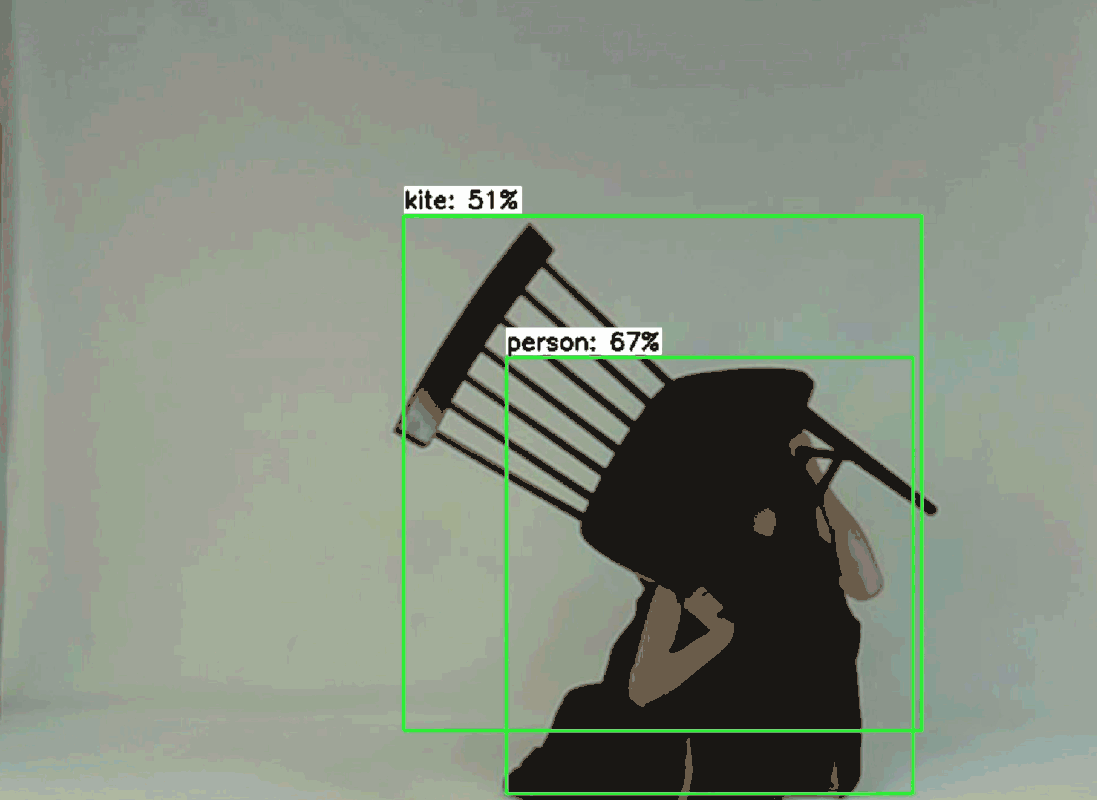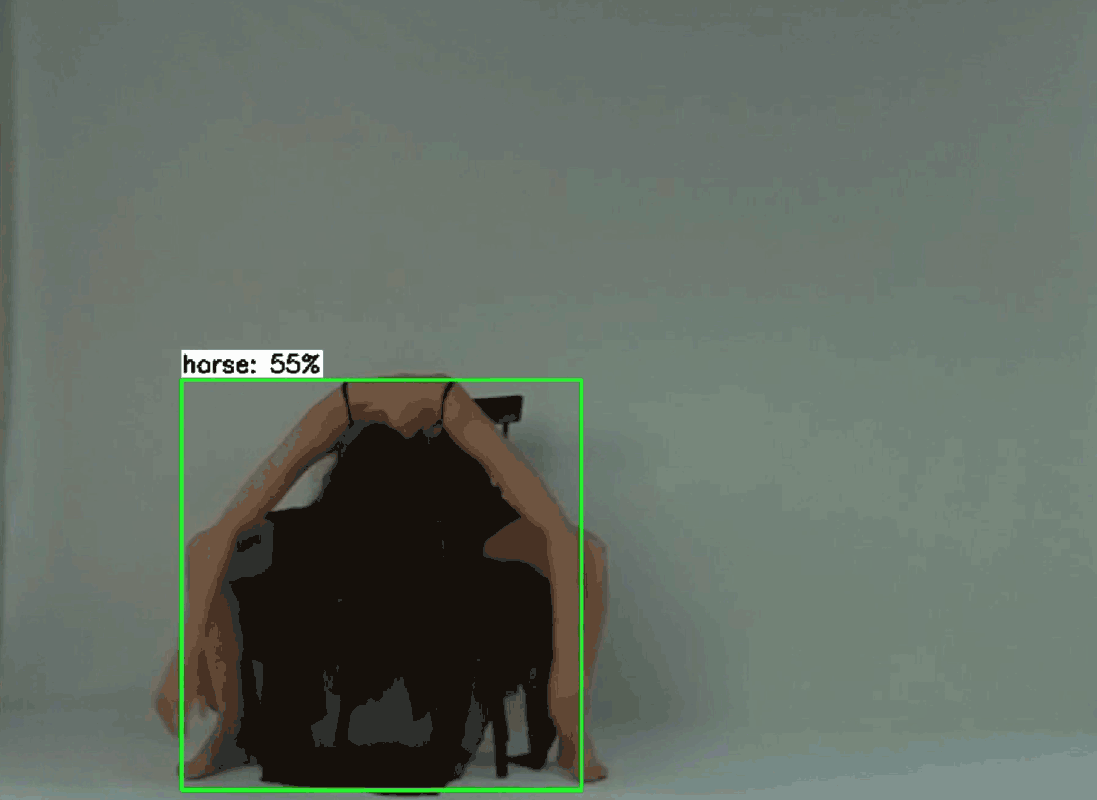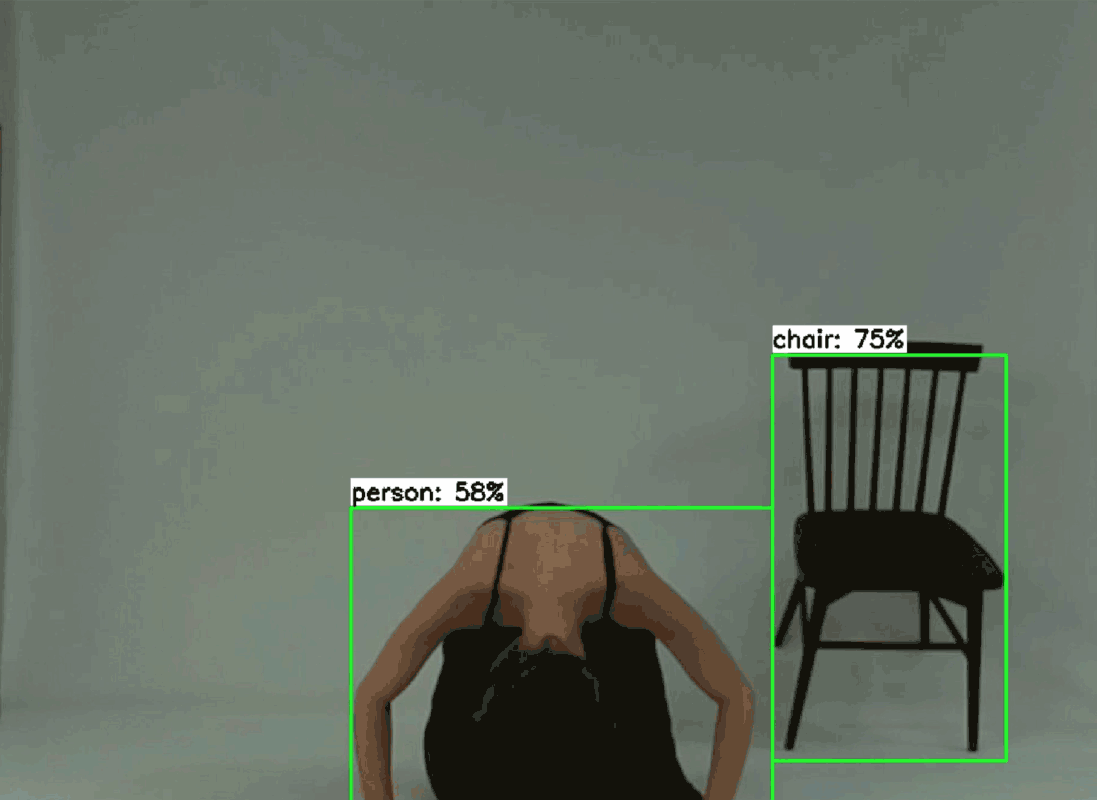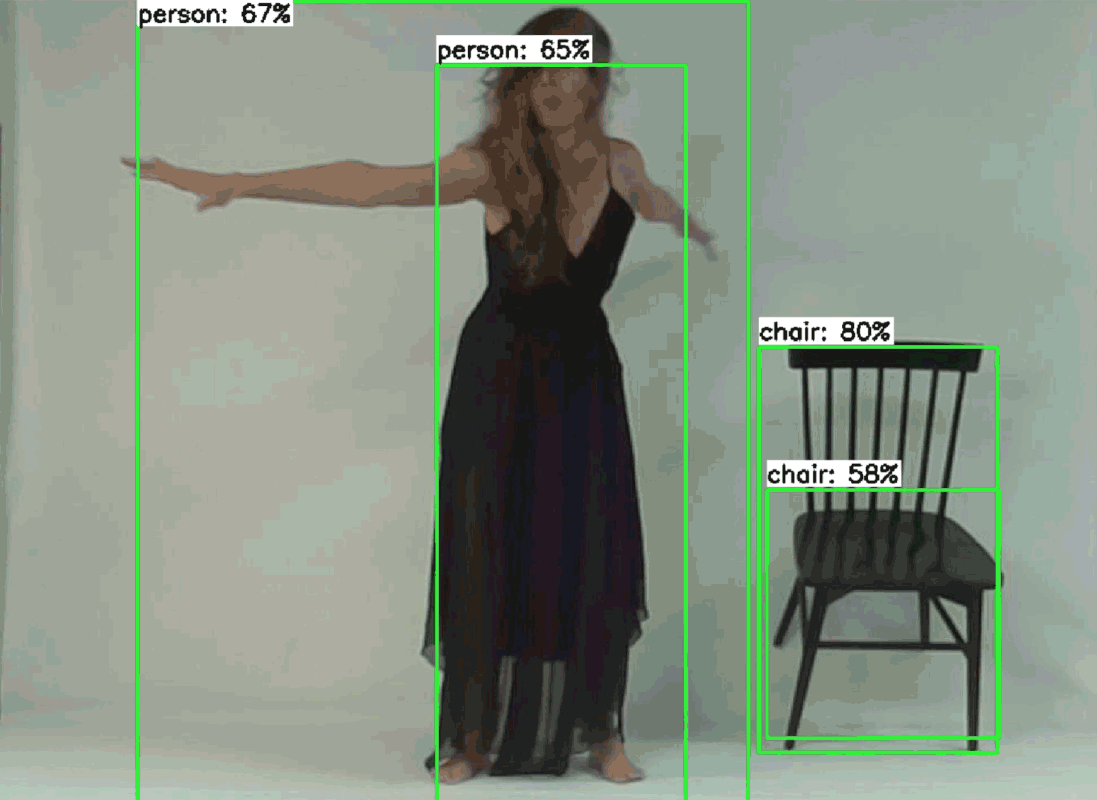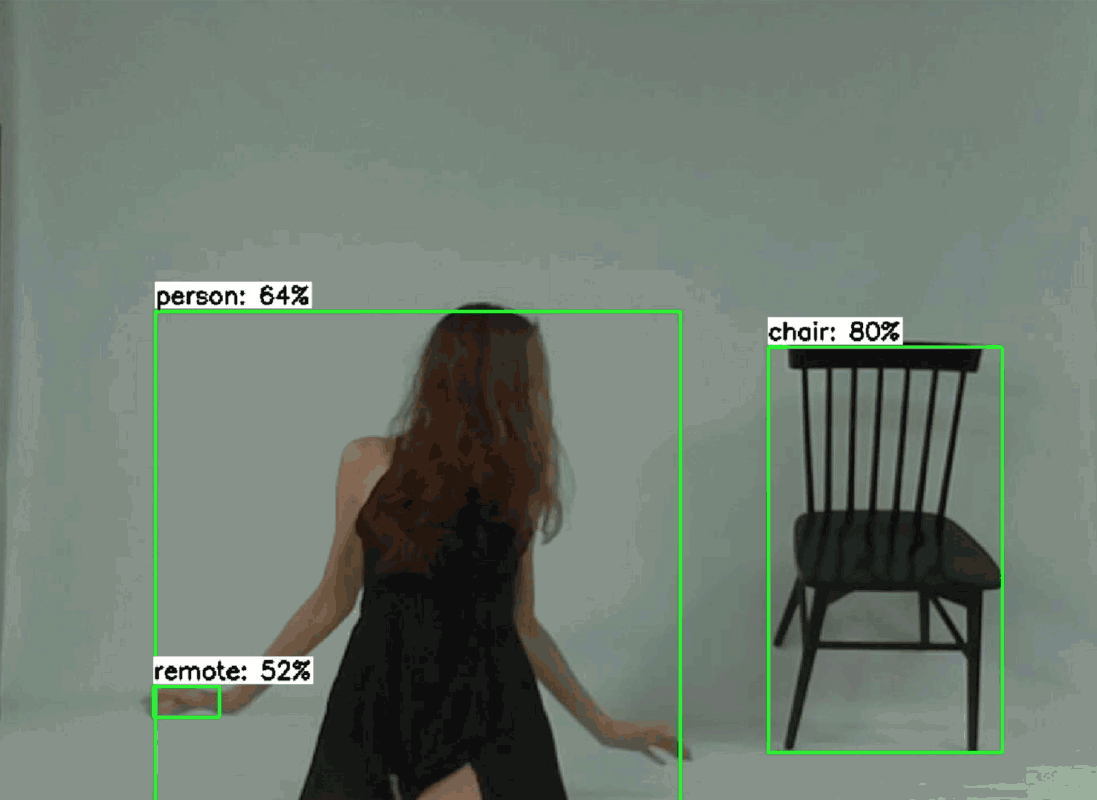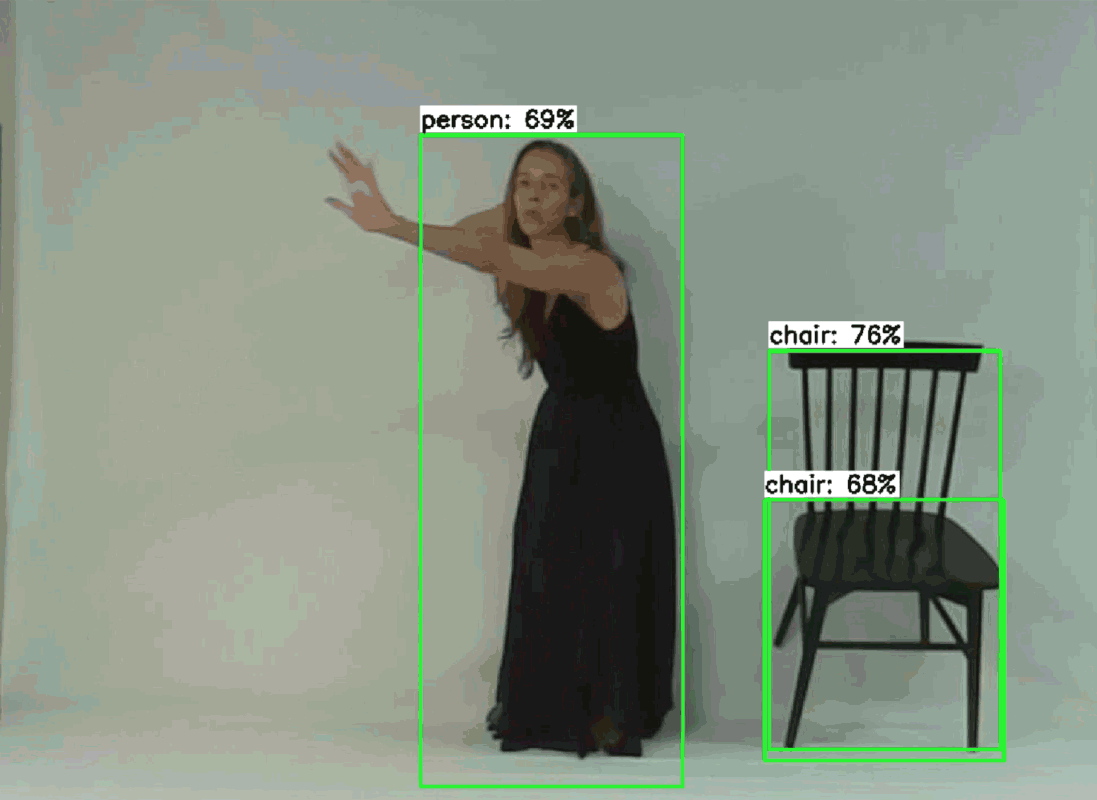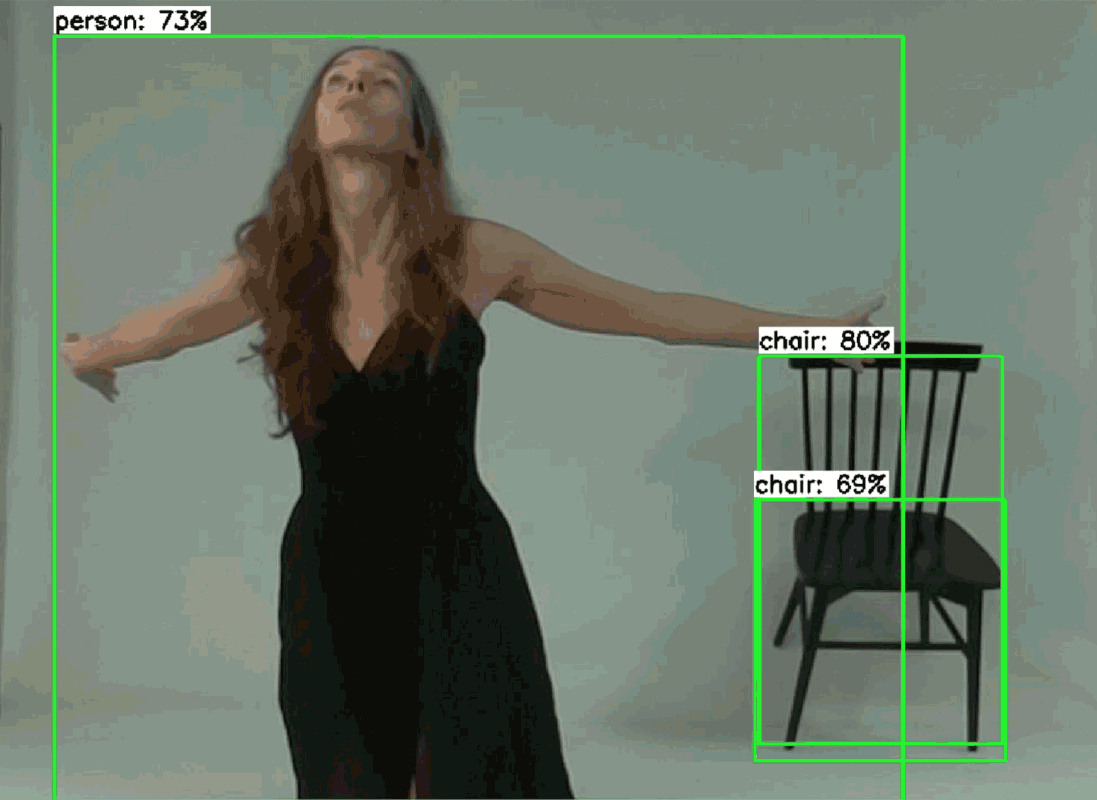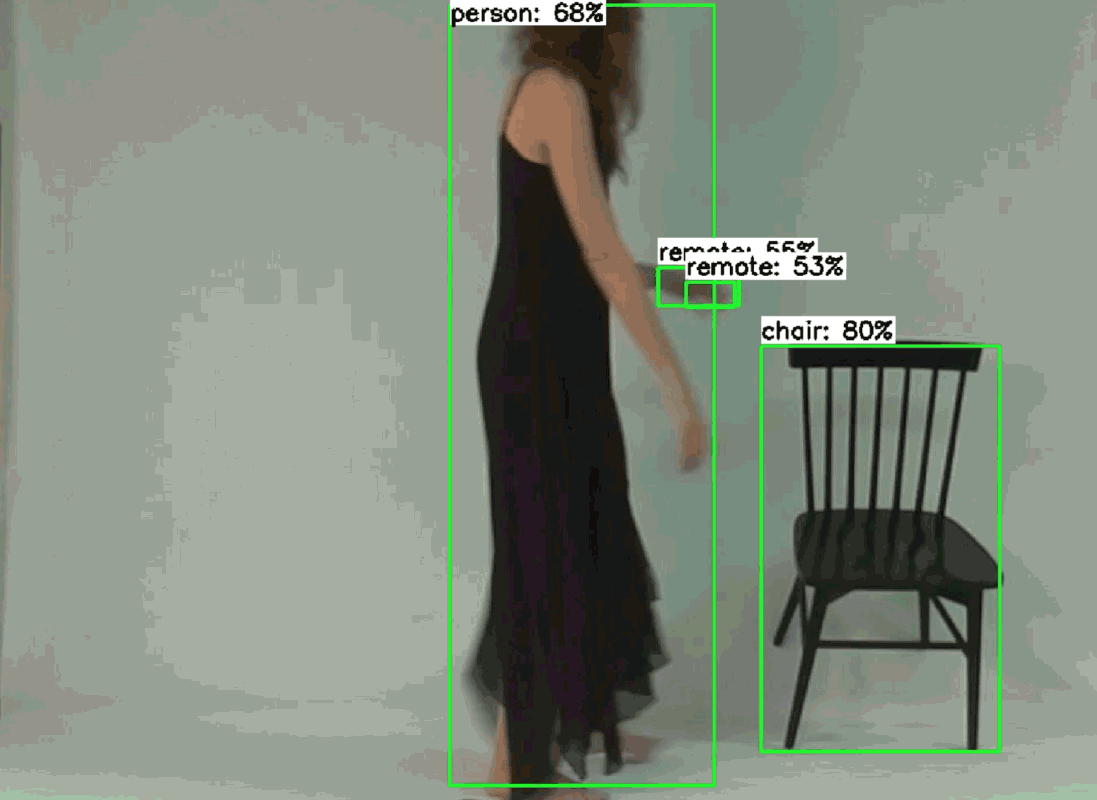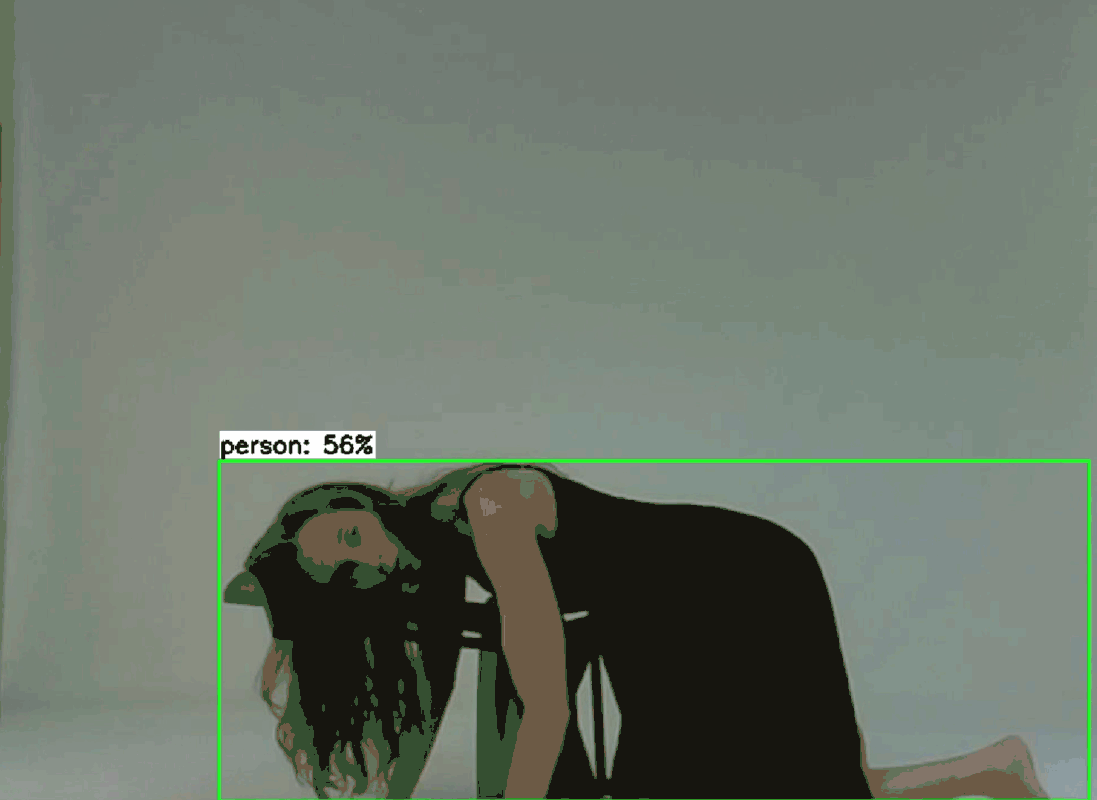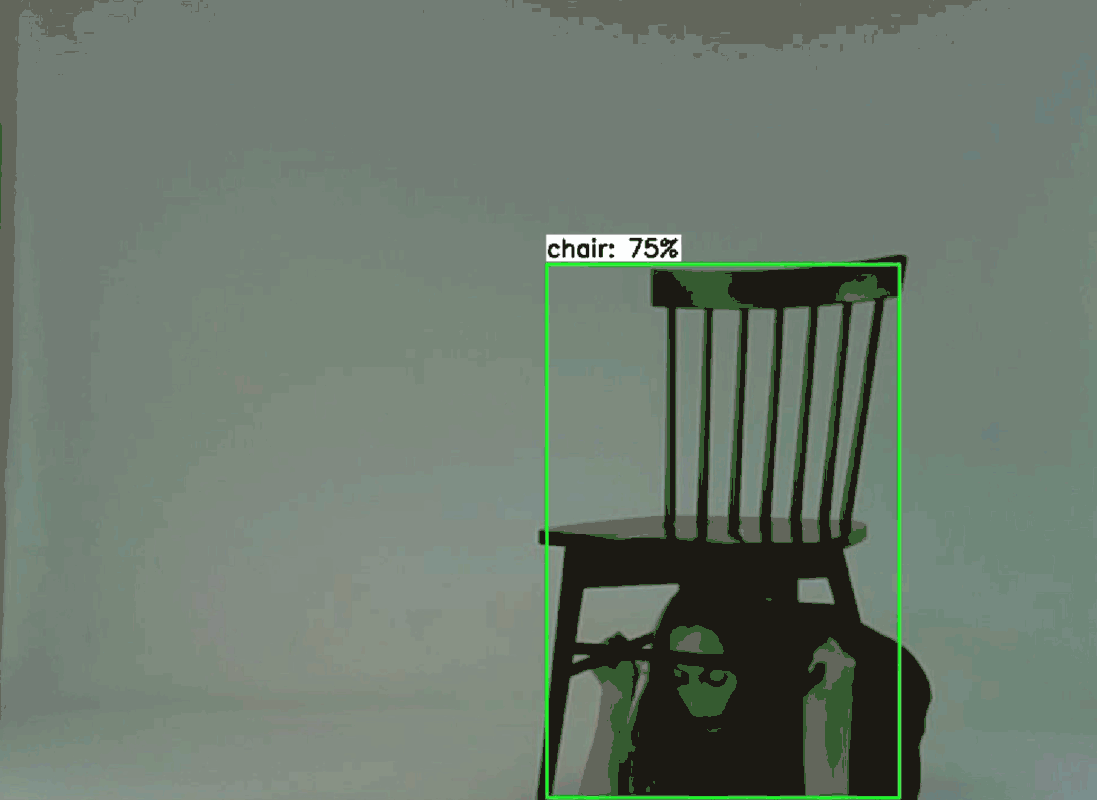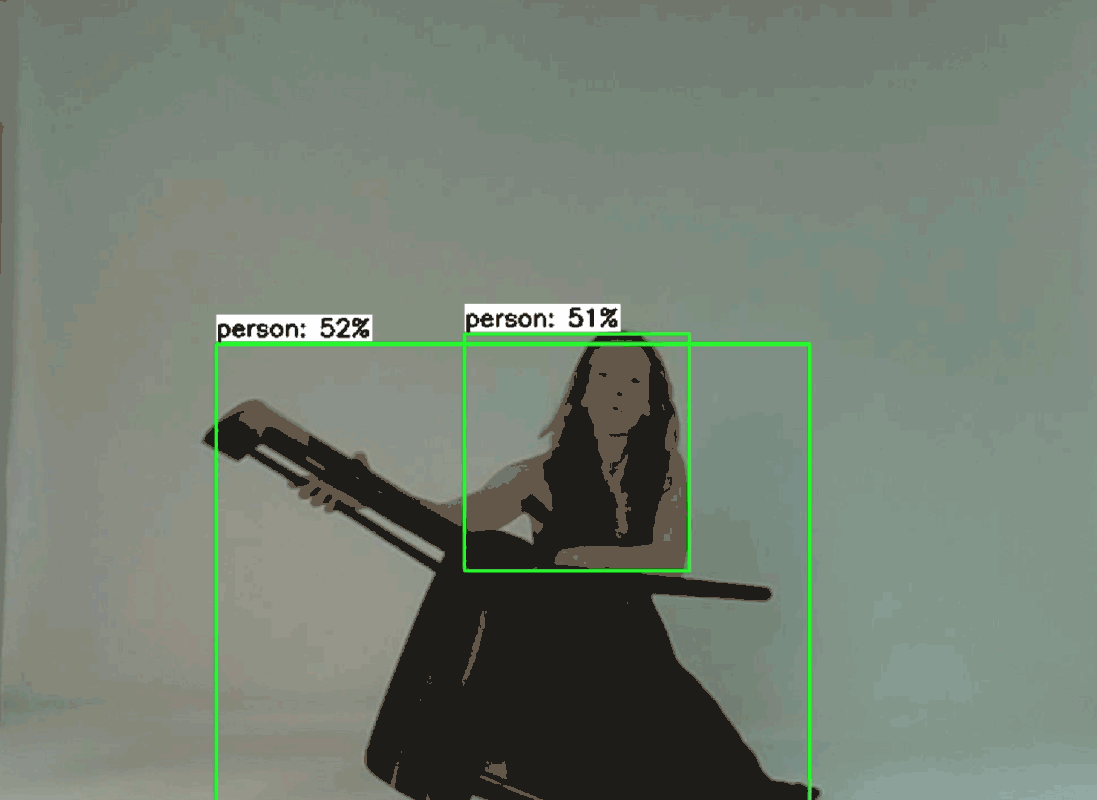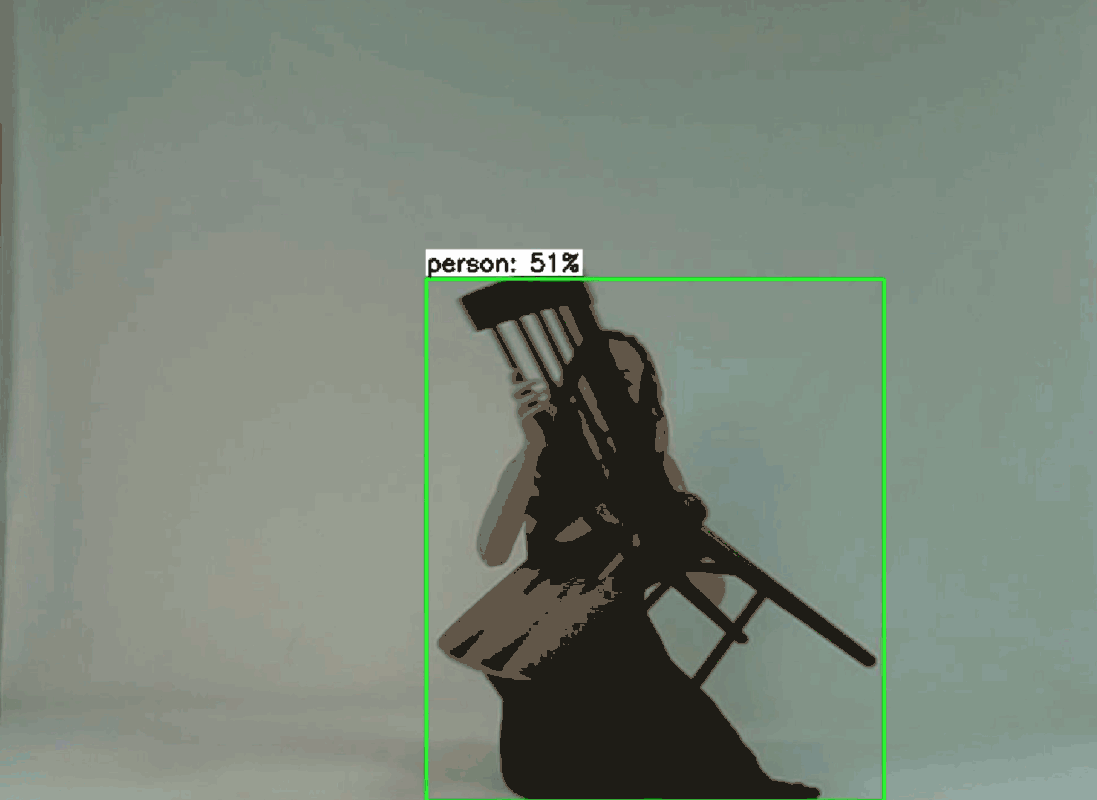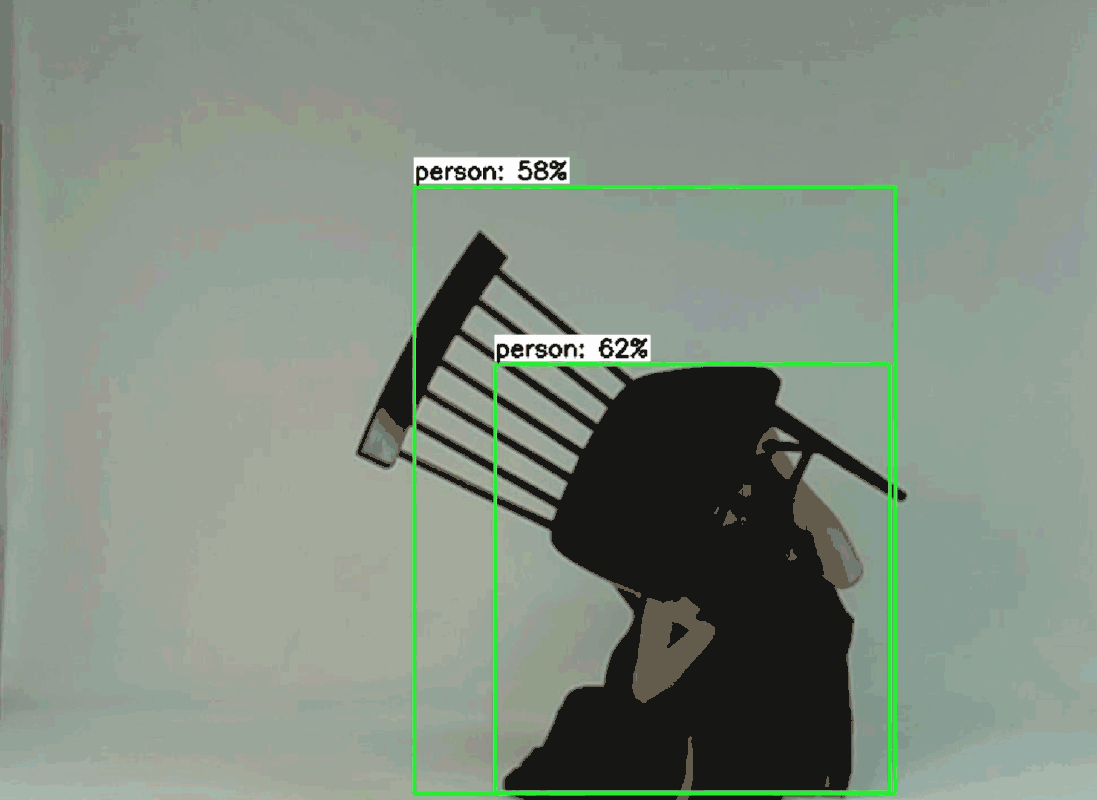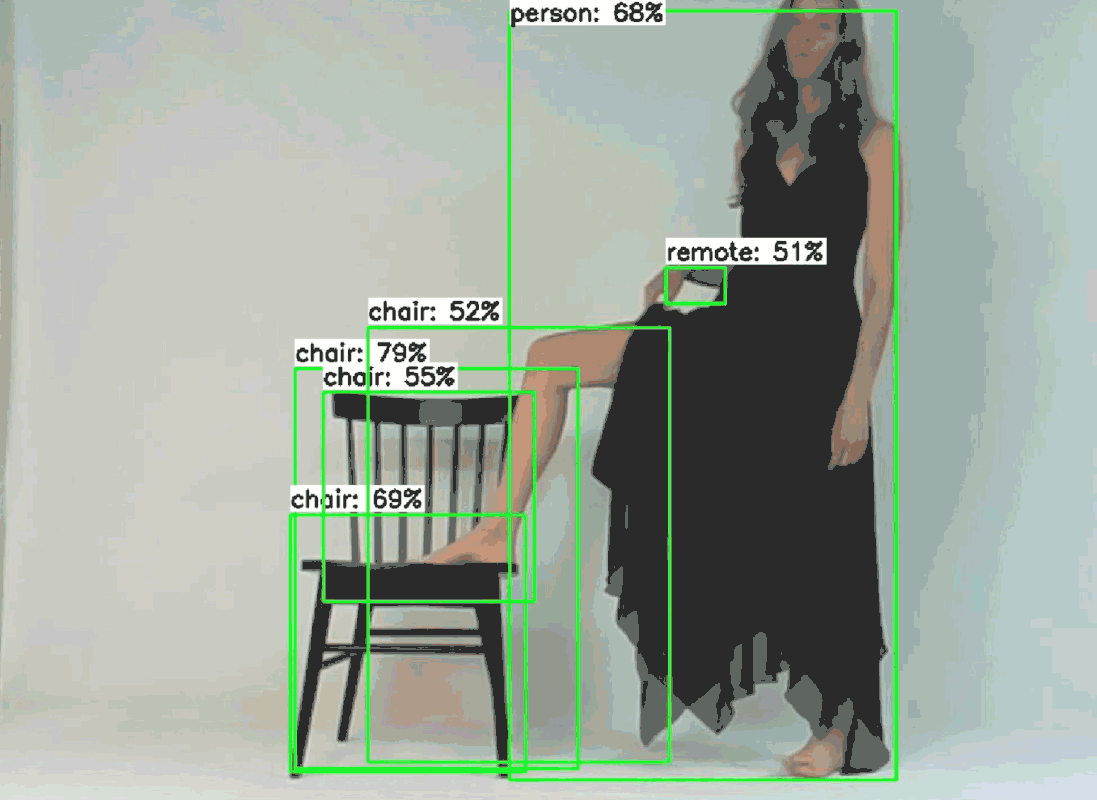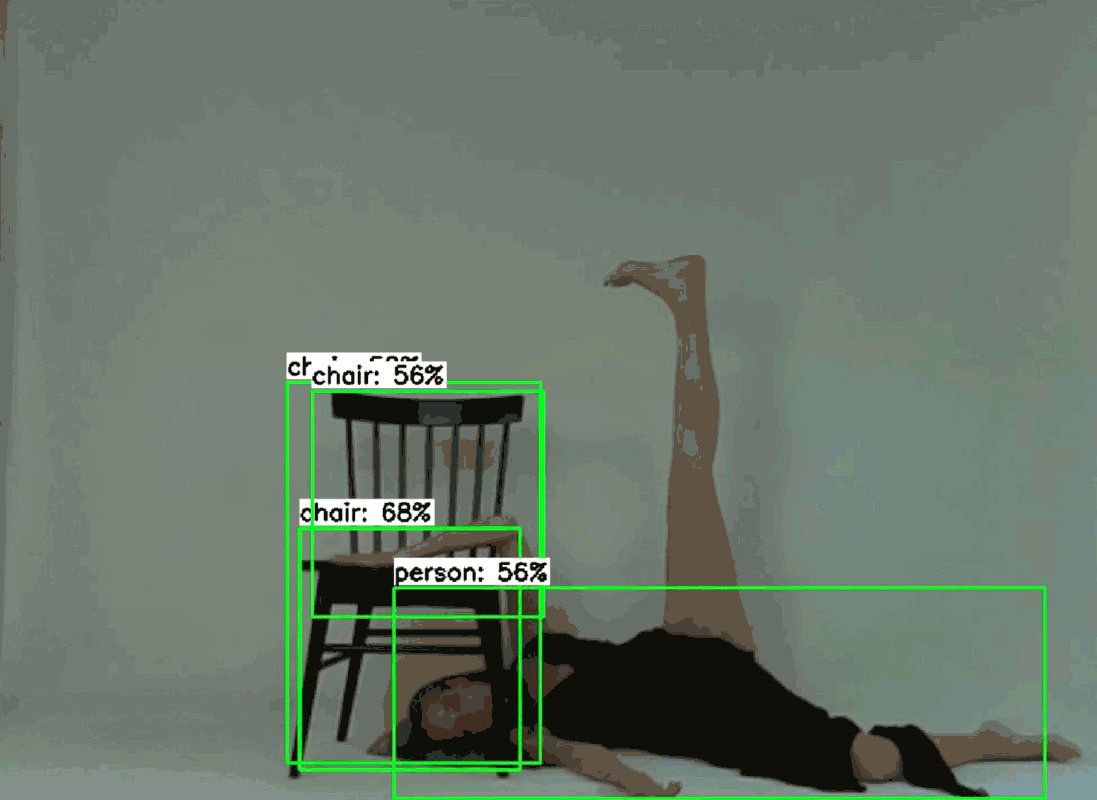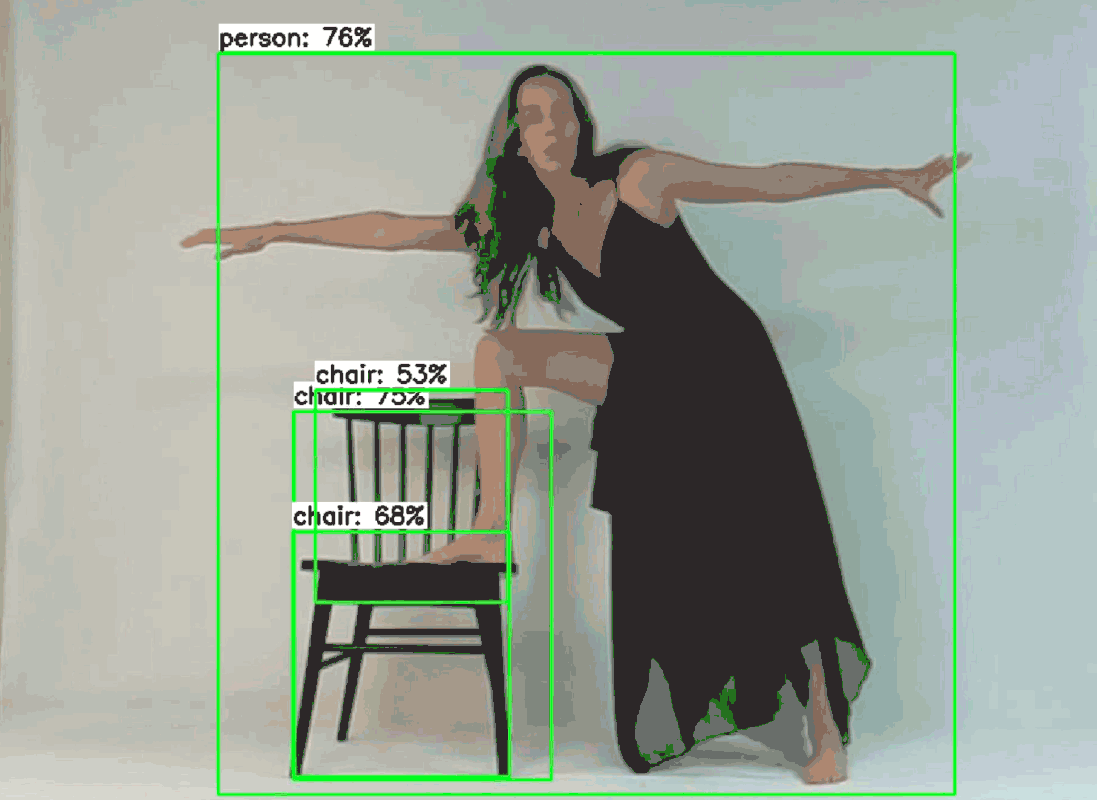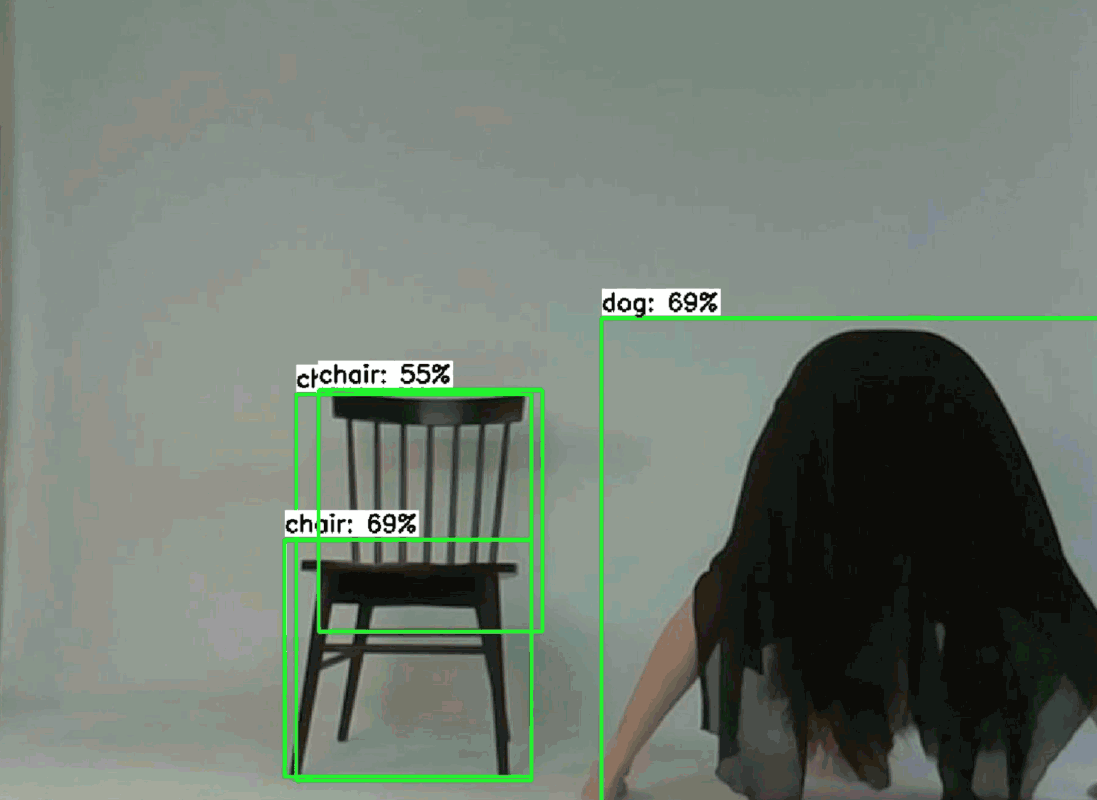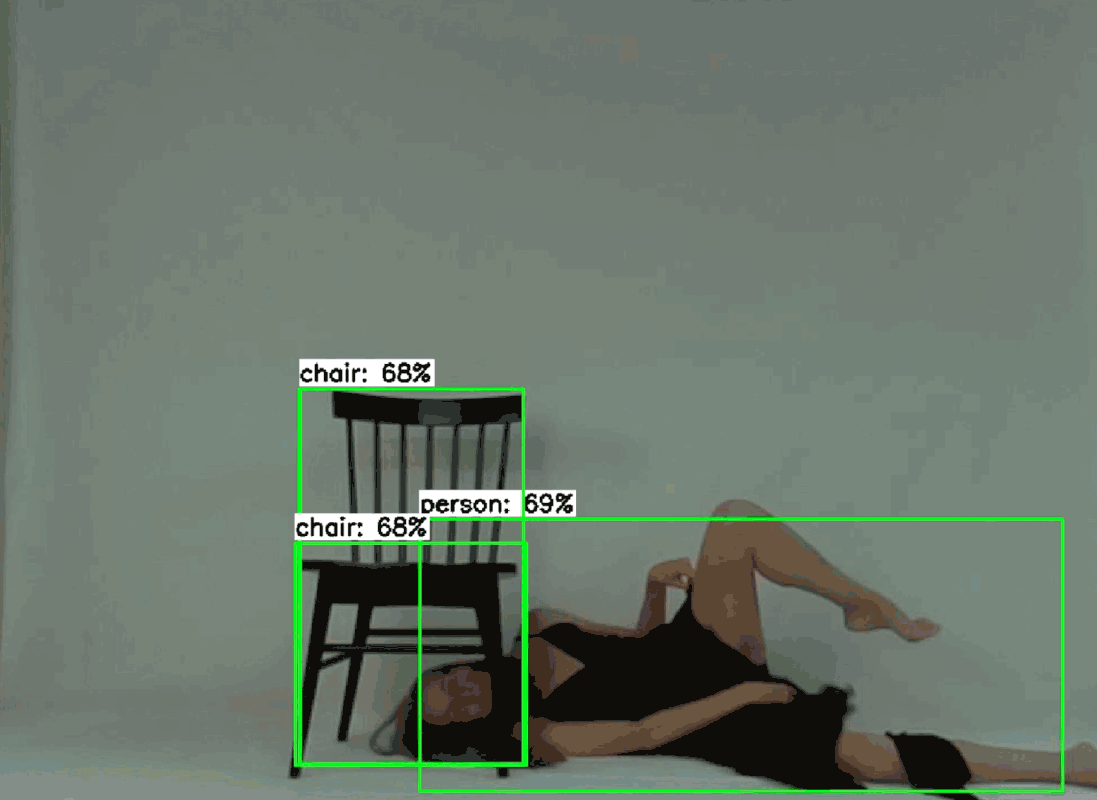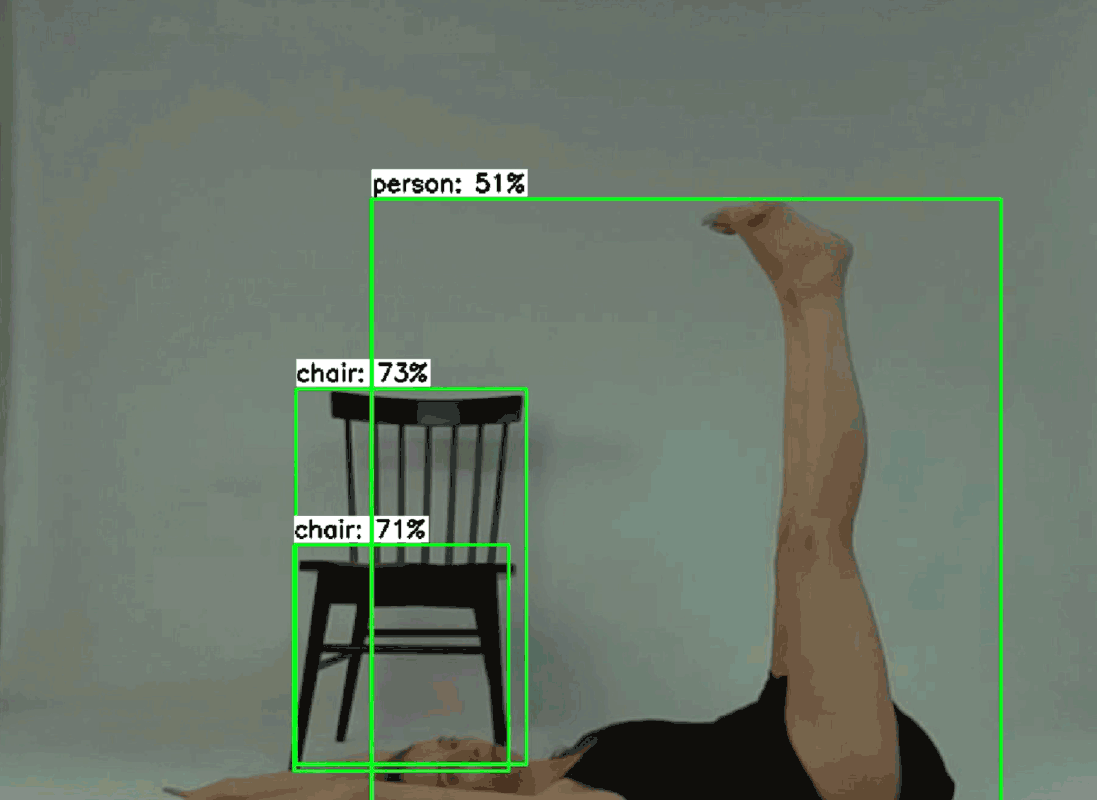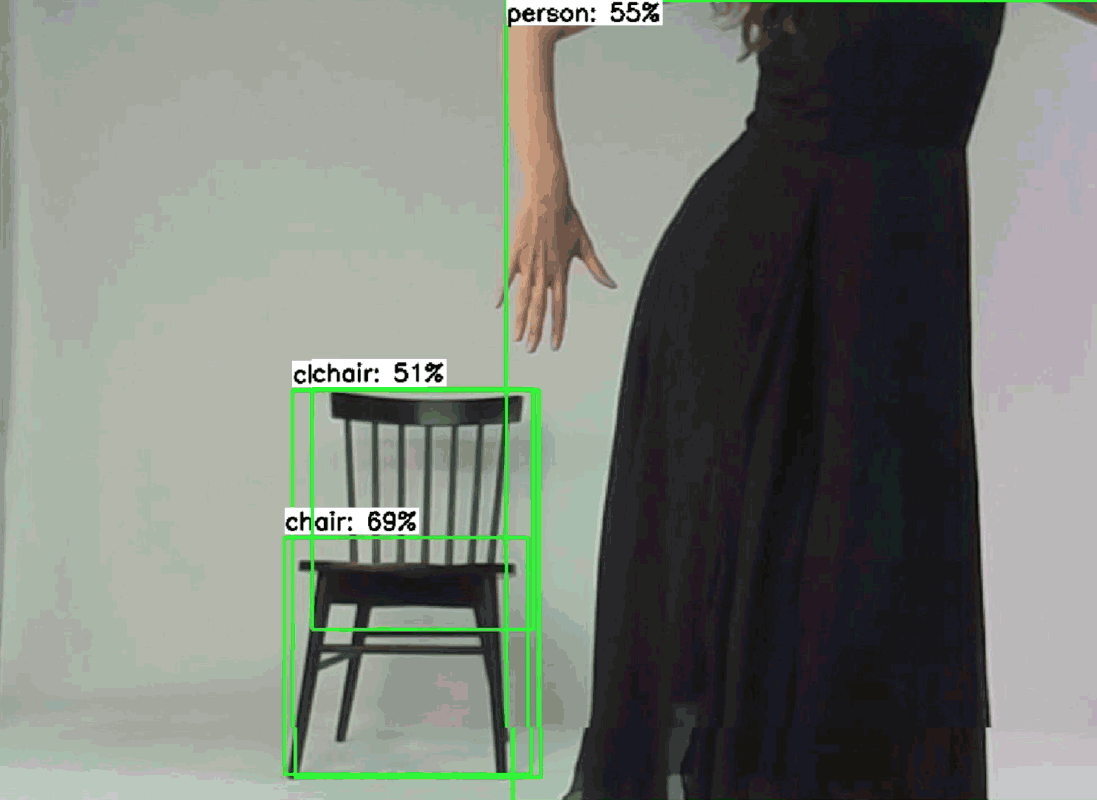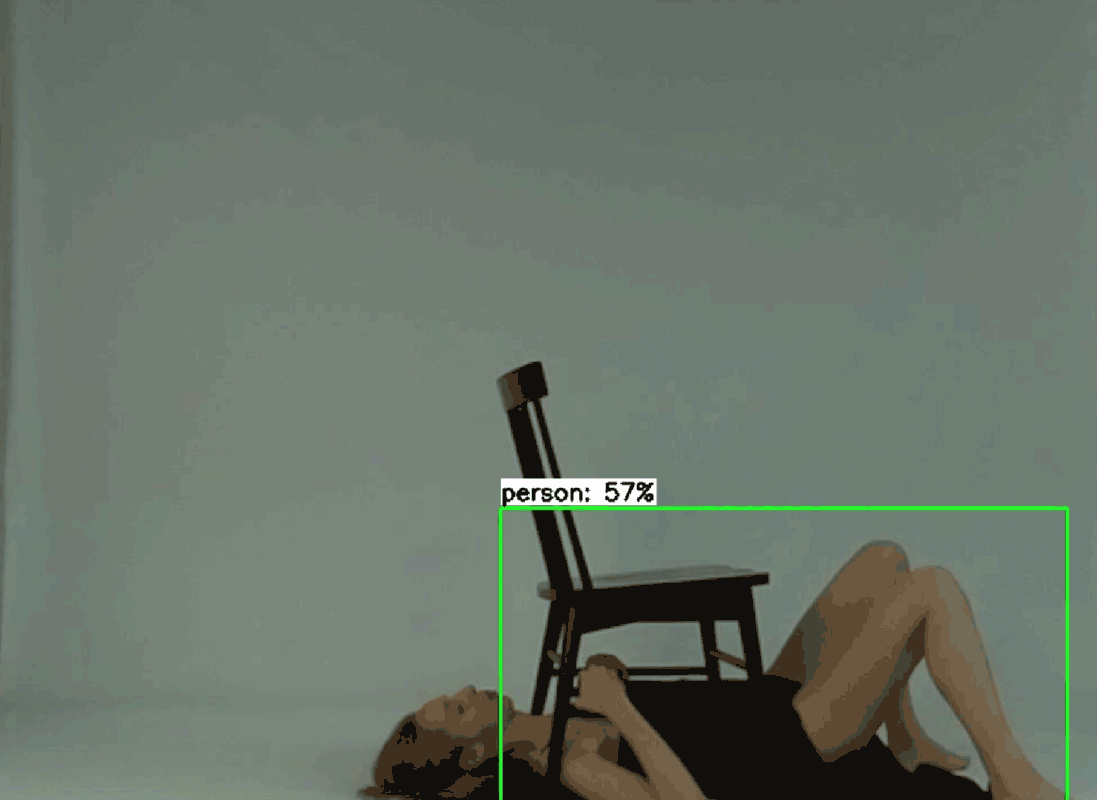The New Vitruvian (2022)
The New Vitruvian is an art performance that examines the potential of identity transformation through the lens of AI technology. The performer spends time in front of an AI recognition algorithm, consenting for it to detect and analyze her body. Most of the time, the algorithm recognizes her as a human being, a 'Person', but there are flickering moments in which she is detected as something other-than-human. These alternative classifications include various animals and objects which are suddenly recognized while the performer moves around.
The superimposed man inscribed within a circle and a square in Leonardo's 'Vitruvian Man' is meant to represent the ideal person's measurements, a creature who is a microcosm of the grander spheres and its proportions can be relied upon for the definition of the universe. Today humans are superimposed by their digital doubles and inscribed within bounding boxes. What do these measurements do? And how do they define the universe? Our doppelgangers are formed from metadata that accumulates within our interactions with digital media. What is the relationship between our bodies and these digital doubles? Do they mirror our attributes? Do they enable us the freedom to reconsider ourselves and transform? Or maybe they are just a systematic error within the logic of the code?
Brian Massumi claims that the body comes to be defined by its pinning to a grid. The body is boxed into a cultural site. This local positioning is nothing more than an embodiment of an ideology. Massumi asks, where is the potential to change? How can a body perform its way outside of the definitional framework, outside of the ‘construct’? How can the grid itself change? The proposed solution comes with movement. The body that occupies one position on the grid might succeed in making a move, literally, physically moving and occupying another position. But what ends up defining the body is not movement itself, only its beginning and endpoints.
In movement the body is in an immediate, unfolding relation to its own non-present potential to vary.
I stand up right and my face is visible and clear. The thinking machine says: “this is a person”. My body is positioned on the grid. Now the movement begins. I bend my knees and round my back. I lower my body and extend my arms until my hands touch the floor. I stand on my knees and lower my head, my hair covers my face. Now the movement ends. The thinking machine says: “this is a dog”. My body is positioned on the grid.
I am not a software engineer and my understanding of such systems is rather superficial. But this system is still looking at me and I am curious to know. So many questions in my mind remind me that I don’t really know how this system works. I am not the expert software engineer who designed this system. Yet this system is here, and it is looking at me and when I spend time with it I can see that we can communicate. There is a dialogue between us. An entanglement. Is this what Karen Barad defines as an Intra-action? Is this what Jeanne Favert-Saada defines as ‘Getting caught’?
Are you a person?? Do you want to be recognized as one?? Do you care about being recognized?? Recognized. Categorized. Labeled. Classified. Do you want to be positioned and defined?? Do you want to be pinned to the grid??
I want to have the power to decide. I want the agency to shift. I want to manifest the fullness of my being. And I want to be familiar with the tools that allow me to do so. I want access to technologies that can facilitate multiplicity. I want you to see me as I wish to be seen.


















